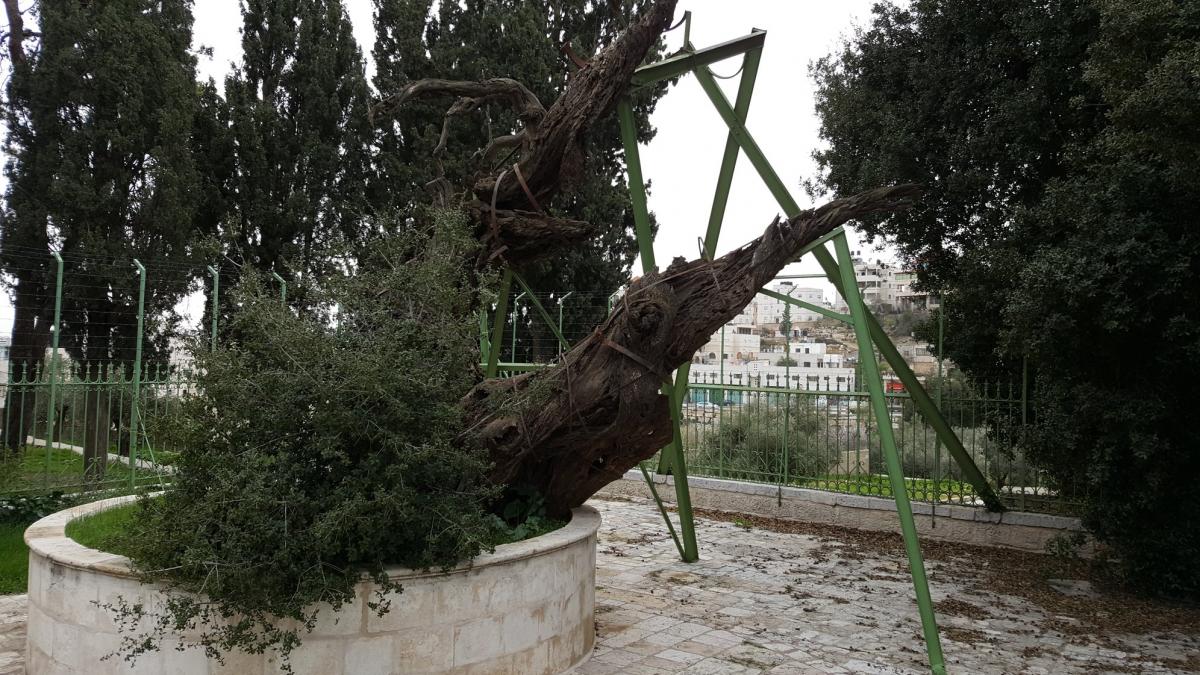The Russian church may lose out to a Muslim endowment who challenged the Palestinian Authority over land rights.
The site of the famous Oak of Abraham, also known as the Eshel Avraham or Oak of Mamre, was acquired in 1868 by Archimandrite Antonin (Kapustin) for the Church of Russia. The Monastery of the Holy Trinity was founded nearby where to this day it is manned by several Russian monks. It is known in Arabic as Al-Moscobiyeh (also spelled Al-Moscovia).
For generations, Christians have believed it to be the tree that the Biblical patriarch sat under when he was visited by the three angels as described in Genesis. The venerated tree once attracted countless pilgrims of various faiths. Medieval travelers, both Christian and Jewish have mentioned visiting the tree during their travels to Hebron. A different site, the Elonei Mamre archaeological park, also in Hebron, is thought to be an older traditional site of where the tree was located.
FIEFS AND FEUDALISM IN ARAB COMMUNITIES
Tamim al-Dari was from the Banu al-Dar, a clan of the Lakhm tribe based in what is today Saudi Arabia, Iran and Iraq before the Islamic conquest. He met Muhammad, founder of Islam, in 628 BCE when he led a delegation of Banu al-Dar members. Previously Muhammad granted the Banu al-Dar a part of the revenues of conquered land after the Muslim victory at the Battle of Khaybar. This battle was fought in the year 628 between Muslims and the Jews living in the oasis of Khaybar, in today’s Saudi Arabia. For almost a thousand years it was home to one of the largest ancient Jewish communities in the history of the Jewish people. The Jews were defeated and forced from their homes, their property and belongings being confiscated by Muhammad’s army.
Al-Dari confronted Muhammad to receive a portion of the looted revenue. He converted to Islam after meeting him. He was granted a large qita’a (akin to a fief) for control of Hebron, Beit Einun (the Biblical Beth Anoth) and the surrounding Hebron Hills area. This took place when the Land of Israel was still under Byzantine control. When the Muslims conquered the Land of Israel in 634, al-Dari acquired the territory. He was originally a tax collector. For generations after, Arab communities in the Land of Israel were ruled by feudal land owners, often from foreign Muslim lands as the case with the 1834 Peasants’ revolt.
When the Ottoman Empire conquered the Land of Israel, they challenged their fellow Muslims as to the legality of Tamim al-Dari’s fiefdom asserting that he had no male heirs and doubting his descendants’ claims.
Today, the story of Tamim al-Dari is used by some Muslims to lay claim to Hebron, including plots of land that Muslim residents openly sold to non-Muslims.
For a full article on the history of the Oak of Mamre and Russian church click here.
United States contact info:
http://www.hebronfund.org
1760 Ocean Avenue
Brooklyn, NY 11230
718-677-6886
info@hebronfund.org
Facebook: http://www.facebook.com/hebronofficial
YouTube: https://www.youtube.com/user/hebronfund
Israeli contact info:
http://en.hebron.org.il/
02-996-5333
office@hebron.com
Facebook: https://www.facebook.com/hebron.machpela
YouTube: https://www.youtube.com/user/hebronvideo

Leave a Reply